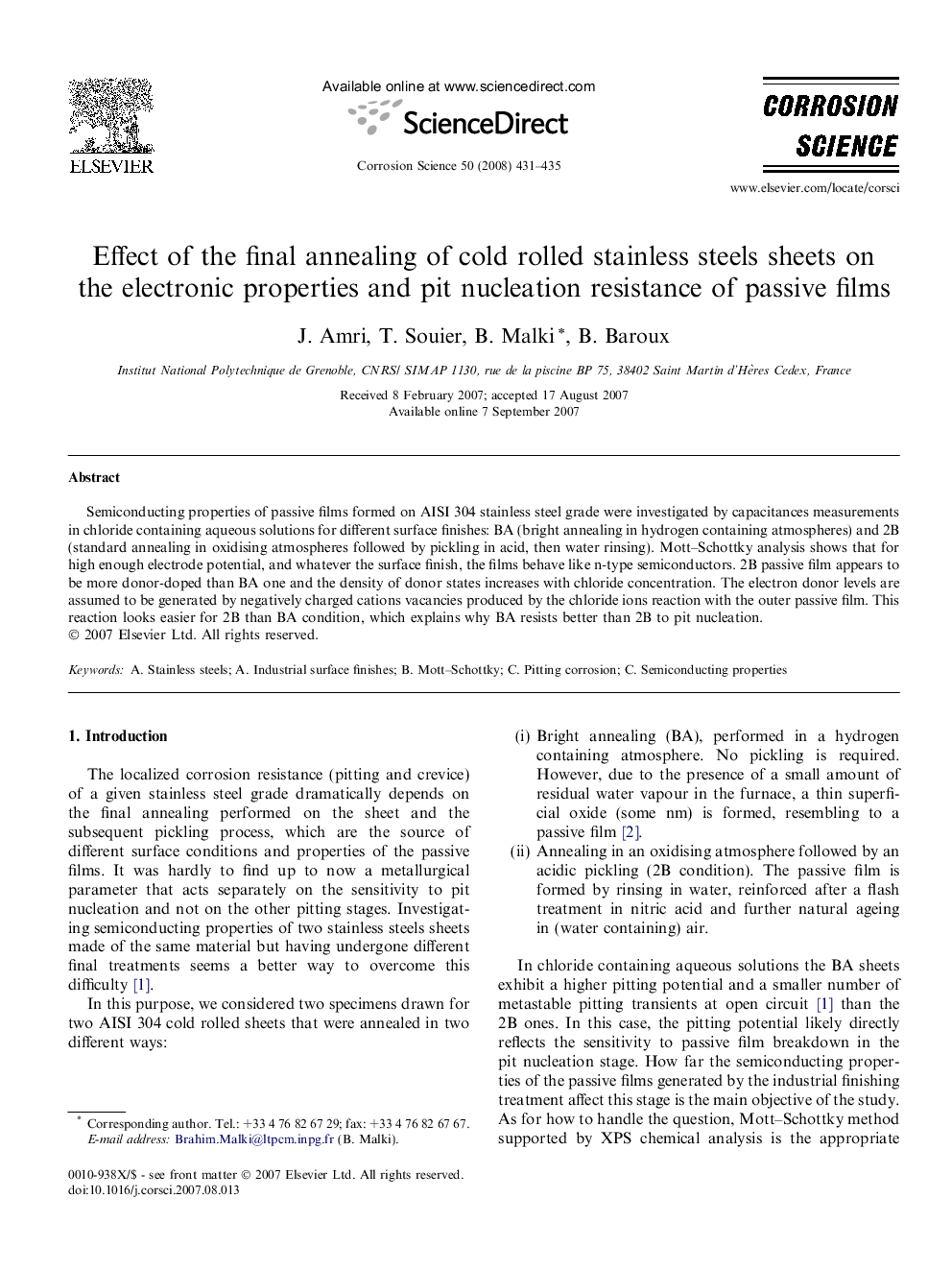| Article ID | Journal | Published Year | Pages | File Type |
|---|---|---|---|---|
| 1471614 | Corrosion Science | 2008 | 5 Pages |
Semiconducting properties of passive films formed on AISI 304 stainless steel grade were investigated by capacitances measurements in chloride containing aqueous solutions for different surface finishes: BA (bright annealing in hydrogen containing atmospheres) and 2B (standard annealing in oxidising atmospheres followed by pickling in acid, then water rinsing). Mott–Schottky analysis shows that for high enough electrode potential, and whatever the surface finish, the films behave like n-type semiconductors. 2B passive film appears to be more donor-doped than BA one and the density of donor states increases with chloride concentration. The electron donor levels are assumed to be generated by negatively charged cations vacancies produced by the chloride ions reaction with the outer passive film. This reaction looks easier for 2B than BA condition, which explains why BA resists better than 2B to pit nucleation.
